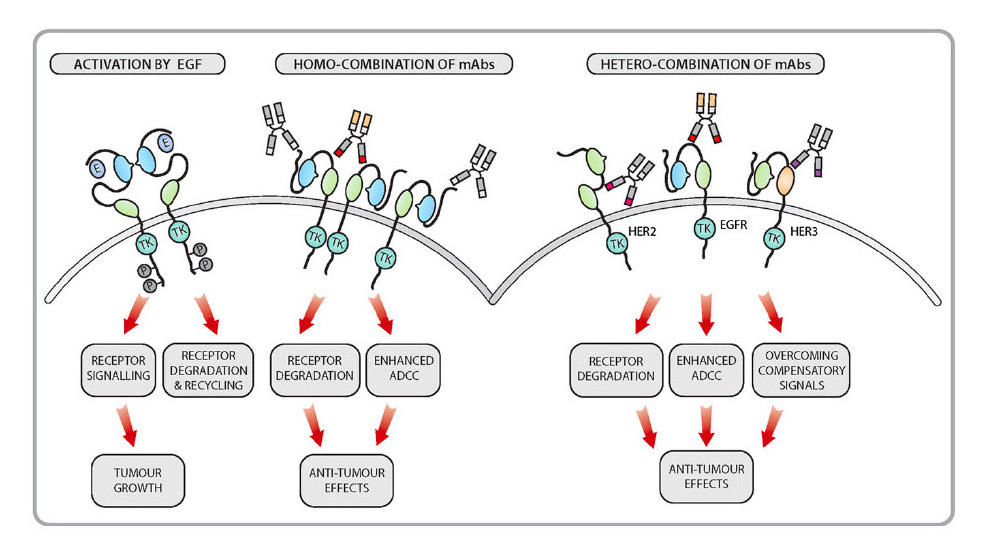The human EGFR-family plays critical roles in tumor progression. As such, several therapies intercepting these receptors were developed and are clinically approved. Our lab has successfully developed throughout the years numerous antibodies targeting the EGFR-family, both receptors and cognate ligands13-17. Currently emerging are also pharmacological strategies able to circumvent resistance and re-sensitize patients to therapeutic treatments. More recently, we started focusing upon a feature that might change the landscape of cancer therapy in the near future, namely concurrent delivery of several distinct antibodies18-23. Individual antibodies in such cocktails might share an antigen molecule (homo-combinations), or they might engage distinct, yet complementary antigens (hetero-combinations)24, as illustrated in the picture below. As such, we envision a tailor-made strategy for cancer treatment, which combines (or not) chemotherapeutic agents with two or more antibodies.
Mechanisms of action for homo-combination and hetero-combination of monoclonal antibodies. Combining two or three monoclonal antibodies that engage distinct, non-overlapping epitopes of the same receptor is termed a homo-combination mixture. Applying homo-combination mixtures on receptor tyrosine kinases, such as EGFR and HER2, might be associated with synergistic anti-tumor effects due to acceleration of receptor degradation or because of enhanced ADCC. By contrast, combinations of antibodies specific to distinct, yet functionally collaborating receptors (termed hetero-combinations), might similarly enhance ADCC and receptor degradation, but in addition, it might inhibit compensatory signals that often contribute to emergence of resistance to a single monoclonal antibody.


